Loetz vase, Phänomen genre “Crête”, 1900.
H 7 cm W 9.5 cm
€ 300,00
Prijs incl. 6% BTW & Verzendingskosten
Meer informatie
After the death of Johann Loetz the company was continued by his wife Suzanne under the name “Johann Loetz Witwe”. The driving force of the entrepreneur was Maximilian Ritter von Spaun who became owner in 1879, assisted by Eduard Prochaska who later became director of the firm. In 1883 the company acquired the title of “imperial-royal privileged glass factory”. In 1890 the Johann Lötz Witwe factory was one of the leading glass producers, not only in Bohemia but in all of Europe. The most important change in the firm’s artistic program came in 1898 with the release of the first Art Nouveau series, namely the “Phänomen” glassware, art glass made from own designs. Of the utmost importance was the talent of the glassblowers, among whom especially members of the Alferi family were of the utmost importance.
Shown here is a small round belly-shaped mouth-blown vase on a low base and with a rejuvenating cylindrical neck. with round mouth On clear colorless grass a grass green color pigment was applied inlaid with yellow colored threads drawn horizontally and vertically and blue spots which, when illuminated, give a sky blue and silver iridescent color. At the bottom we see a smoothly polished pontille. The vase can be cataloged under Phänomen Genre, with iridescent “Crete Papillon” decor. The vase dates from around 1900.
Condition: perfect.
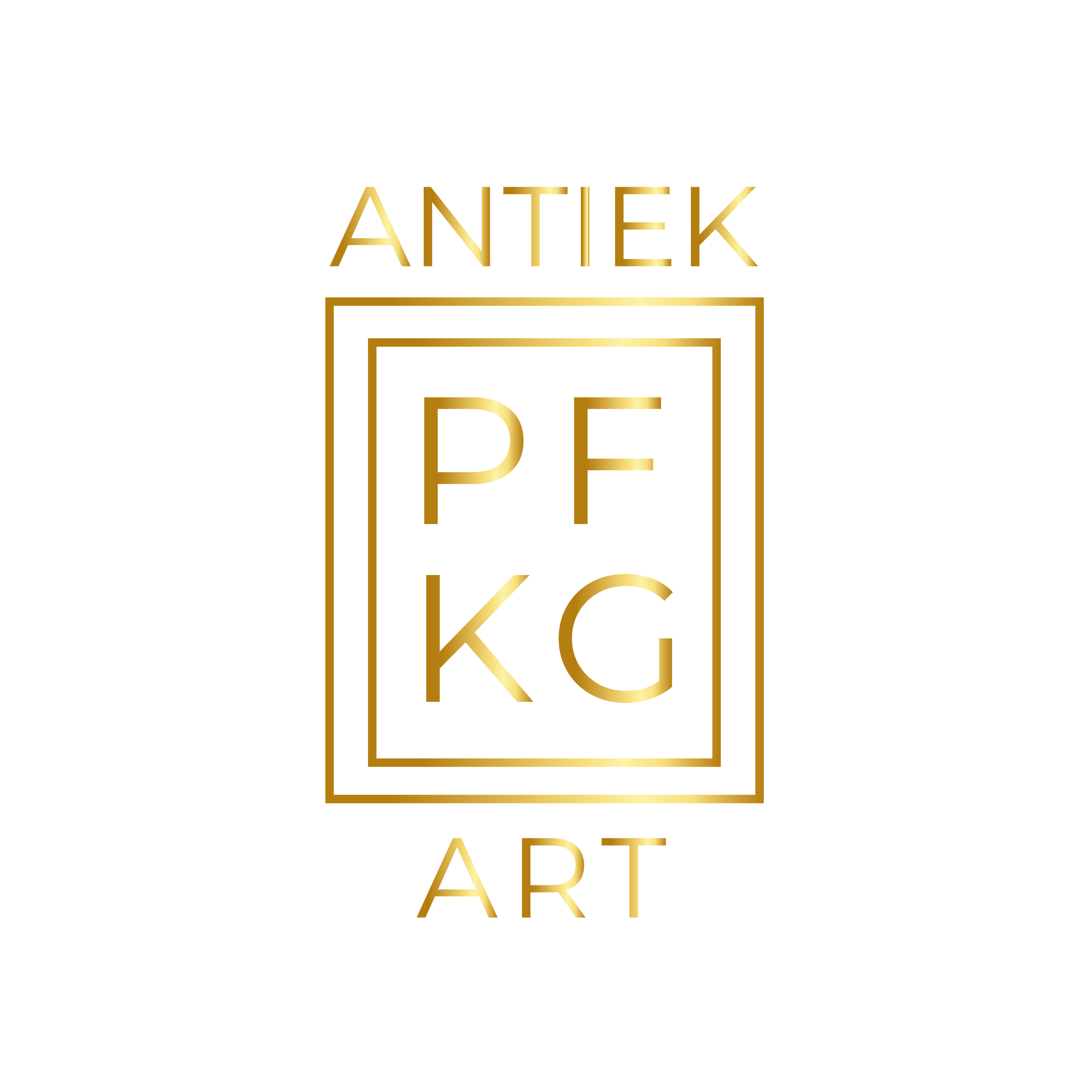
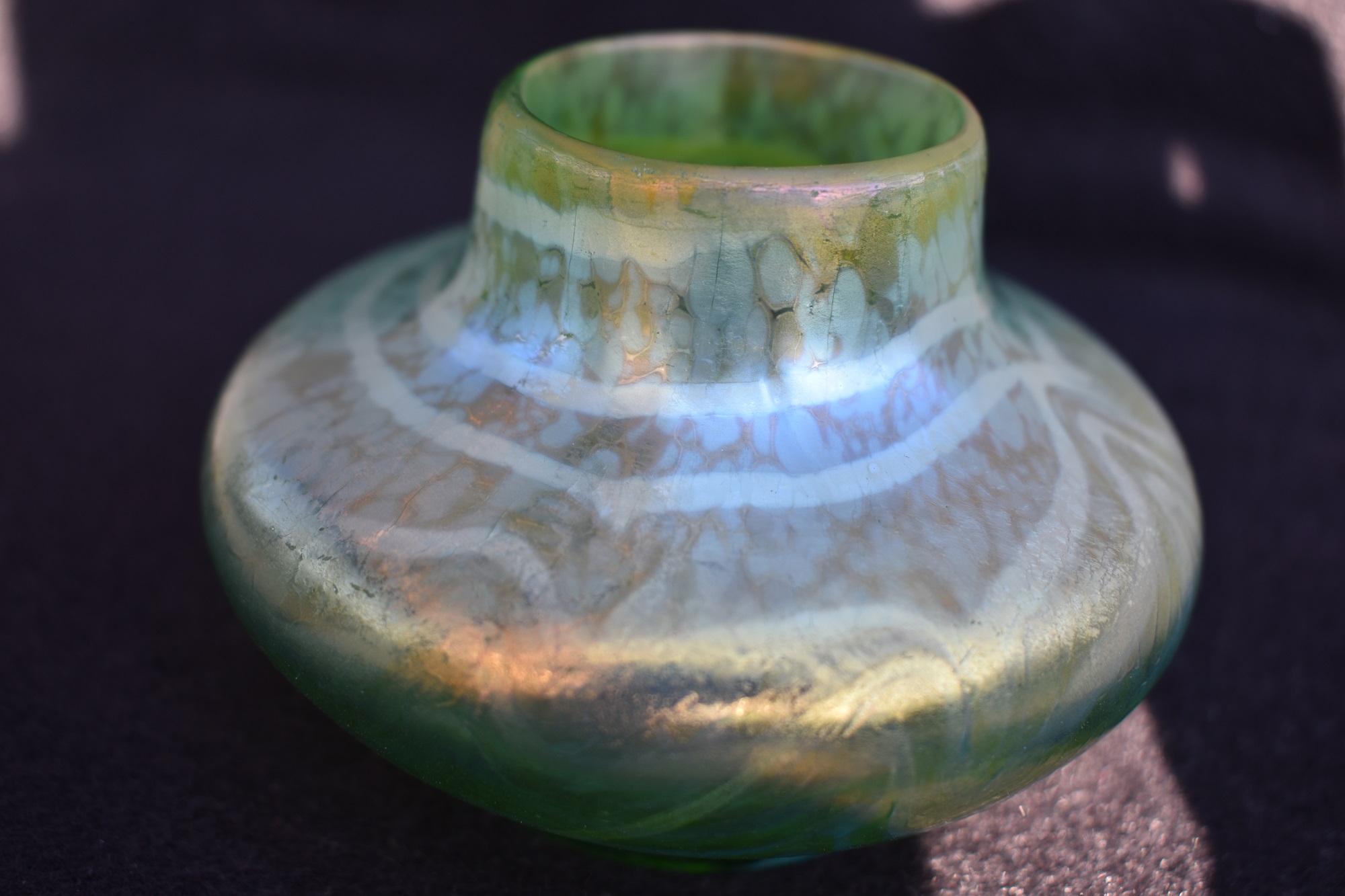
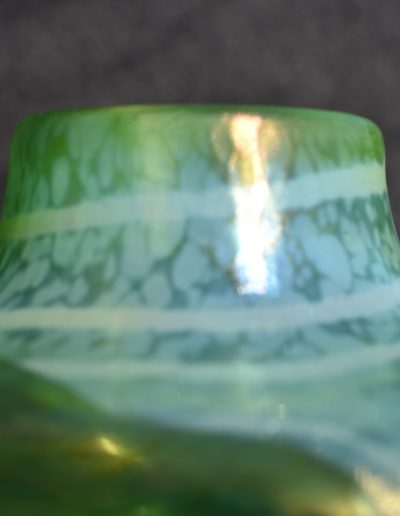
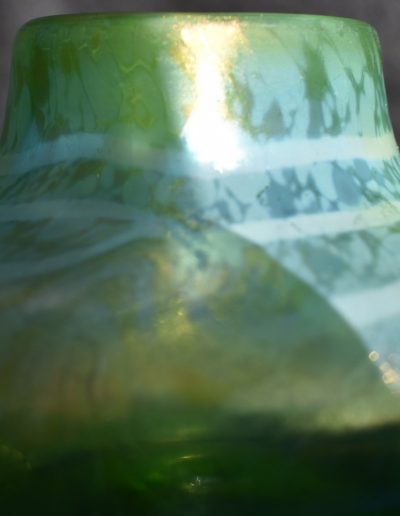
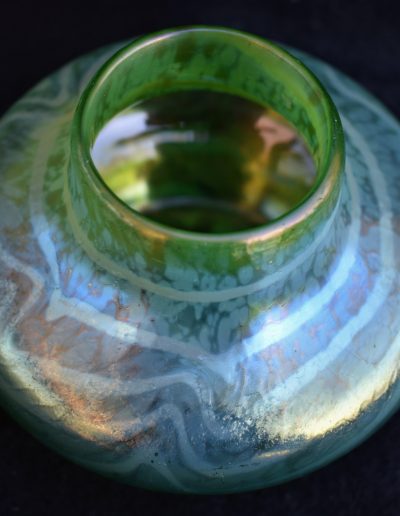
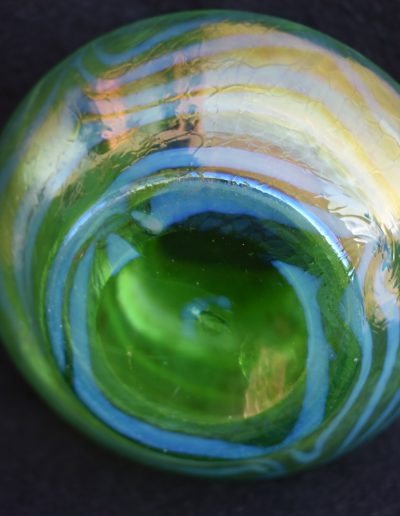
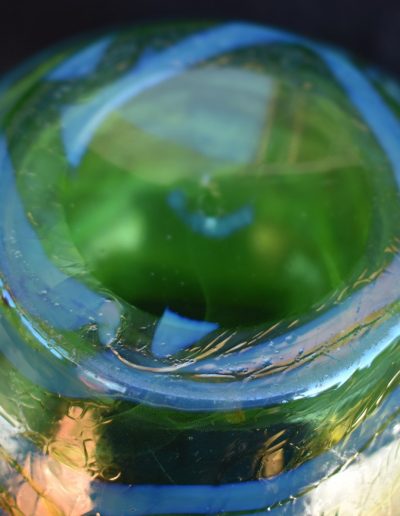
Reviews